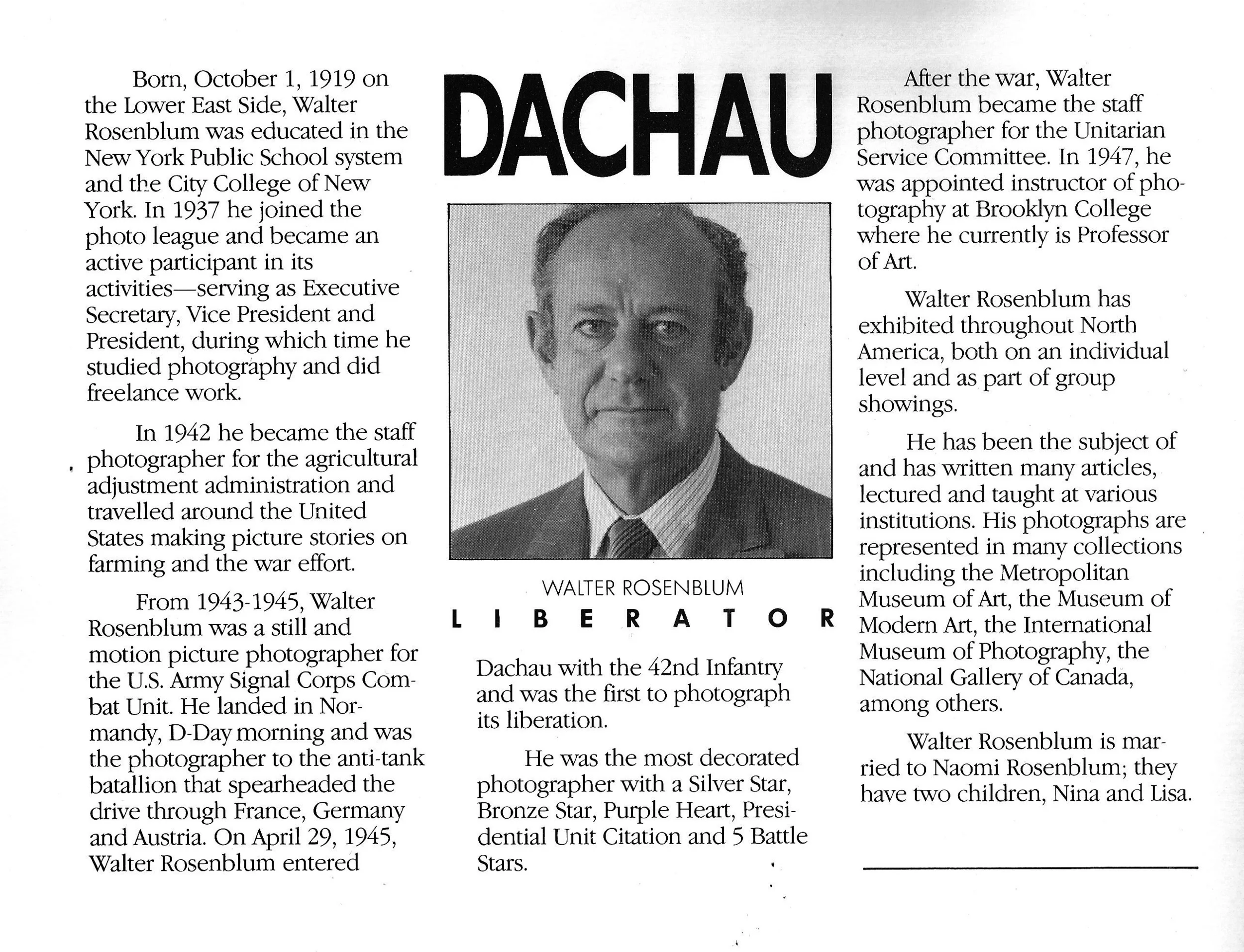CURRENTLY ON VIEW:
"RECENT ACQUISITIONS" EXHIBITION AT THE CLEVELAND MUSEUM OF ART FEATURING: WALTER ROSENBLUM
Published in the March/April 2018 edition of The Cleveland Museum of Art Members Magazine: ACQUISITION HIGHLIGHTS
Exhibition on view March 17 - June 6, 2018
Digital File Magazine
The Photographer Walter Rosenblum: Some Kind of Respect
By David Walsh
5 June 1998
Walter Rosenblum, Photographs:
A Retrospective Exhibition
At the Godwin-Ternbach Museum,
Queens College, New York City
April 20-May 29, 1998
Walter Rosenblum, the American photographer, was born in 1919. The child of Romanian Jewish parents, he grew up on the Lower East Side of Manhattan. As a teenager in 1937 he joined the New York Photo League, a left-wing group. There he met Lewis Hines, the famous photographer of immigrants and factory workers, and Paul Strand, one of the greatest photographic artists of the mid-century, who became his mentor and friend.
A recent show at the Godwin-Ternbach Museum at Queens College in New York City displayed 70 of Rosenblum's photographs. An accompanying video included interviews with the photographer and scenes of him taking pictures and visiting his old neighborhood. The death of his mother at a relatively early age, he explains, was a devastating blow. The qualities he cherished in her, he goes on, are to be found "in all the photographs." "All people are the same ... they need some kind of respect." Rosenblum also explains that the roof of an apartment building provided an excellent location from which a photographer could survey the world around him. The search for those human qualities he held dear and for a vantage point from which they could be observed, uncovered, fought for--these seem to inform a good deal of his life's work.
At the age of 19 Rosenblum undertook his first major photo essay, "Pitt Street," over a period of six months in 1938, one of the worst years of the Depression. The pictures from that essay were among the strongest in the recent exhibit. They demonstrate an eye for shape and form, poetic sensitivity and a sympathy and respect--obviously informed by his political views--for the inhabitants of the neighborhood. The reference to the Depression is perhaps slightly misleading, insofar as the photos do not treat poverty or social deprivation as themes. Rosenblum chose to photograph a group of women in front of a fence, a girl on a swing, Gypsy children playing cards, a young couple in a billiard parlor, a kid on a roof, a group of men in front of Chick's Candy Store, a smiling girl, a seated woman.
On the video the photographer describes the picture of the children playing cards as perhaps his favorite. He says that their faces remind him of a painting by Caravaggio. This photo of smiling, serious children engaged in their game, bathed in late afternoon light, seated on the steps of a tenement building--it is not difficult to see why Rosenblum or anyone else would find the photo attractive. The Girl on a Swing is also a beautiful picture. She is in mid-swing, in the right foreground of the photo. Immediately behind and above her looms the Williamsburg Bridge, in all its menace and promise.
Also in the exhibit are some of Rosenblum's photos from other essays: soldiers and civilians during World War II, Spanish refugees in the south of France (1946), the Gasp� region of Quebec (1949), 105th Street in Manhattan (1962), Haiti (1958-59), Bird S. Coler Hospital (1962) and the South Bronx (1982). Everywhere Rosenblum finds beauty and dignity in ordinary people and situations: in Spanish Refugee Family Washing Clothes, Sisters in Window(from the 105th Street series), Funeral Group (from the Haitian series), for example. Man and Woman (at Lincoln Hospital in the Bronx) is another remarkable picture, of two scarred, sad and charismatic faces.
Rosenblum's photographs are not the final word in the art form. They lack some of the explosiveness and inventiveness of early photos by Strand or Henri Cartier-Bresson. This doesn't diminish his accomplishment. There are artists who bring beauty into the world by creating something new; there are others, like Rosenblum, who bring out the beauty of the existing world. Both undertakings are legitimate.
Walter Rosenblum: In Search of Pitt Street
Noted New York photographer Walter Rosenblum has enjoyed a long and fascinating career: the son of a poor fruit peddler on the Lower East Side, he studied under Paul Strand at the Photo League, witnessed the Normandy invasion and the liberation of Dachau as an army cameraman, and developed a documentary style that was warm but mostly free of sentimentality. In recounting his life story, daughter Nina Rosenblum allows Walter to rattle on like Polonius, sharing his sage observations, and by her estimate he seems never to have made a wrong move, said a harsh word, or taken a photo that wasn't museum quality. When she sticks to the facts, this 1999 film provides a graceful portrait. 60 min.
By Jack Helbig











